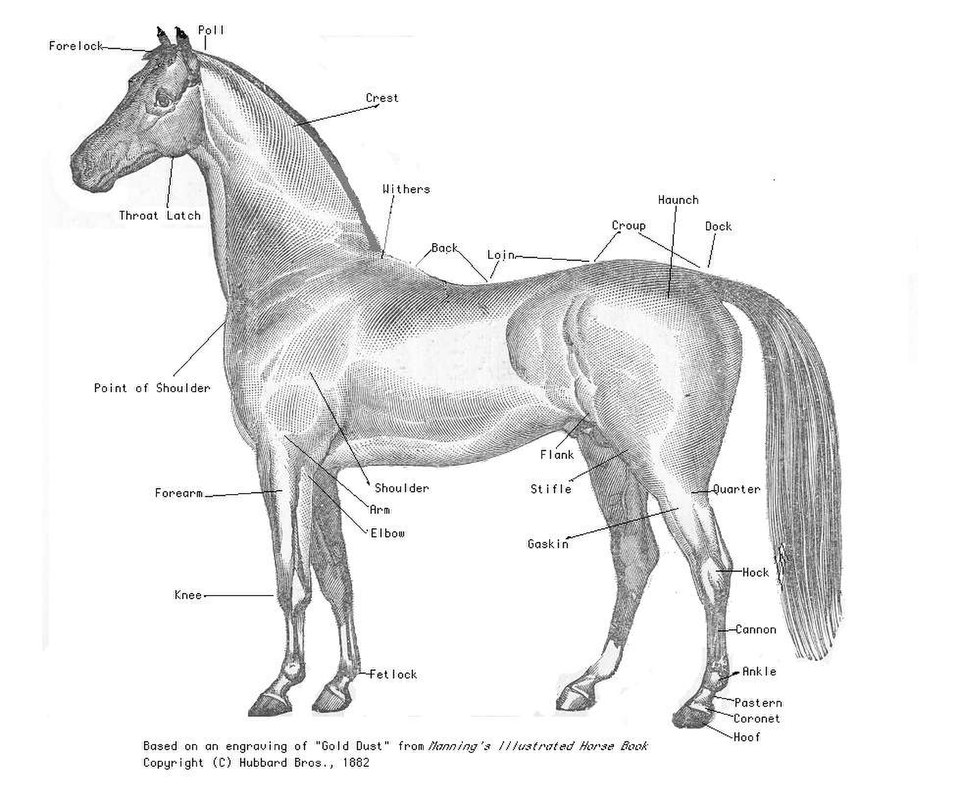Difference between revisions of "AY Honors/Horsemanship/Answer Key"
From Pathfinder Wiki
< AY Honors | HorsemanshipAY Honors/Horsemanship/Answer Key
(formatting, grammar) |
|||
| Line 16: | Line 16: | ||
==4. Demonstrate and explain a minimum of 5 rules to safely approach and lead a horse. == | ==4. Demonstrate and explain a minimum of 5 rules to safely approach and lead a horse. == | ||
| − | + | # '''''Never''''' approach a horse from the backside. A horse can not see you from straight behind and may startle and kick you. Approach from the side or front. Be sure it knows that you are there. If in a stall, knock on some wood softly or whistle, to let him know that you are there. | |
| − | + | # Stand to the left side of the horse's head when leading - at the shoulder is to far back. Keep an arms distance away so the horse doesn't step on you. | |
| − | + | # If the rope has a chain on the end, hold the rope below the chain. If you were to hold the chain and the horse pulls it through your hand, it can injure your hand. Hold the extra rope in the left hand, figure-eight style. Do not coil or loop the rope around your hand, you don't want to get tangled if the horse bolts. | |
| − | + | # When turning right, lean or push into the horse, so it can't step on you as easily. To stop, pull back. | |
| − | + | # Avoid excessively long lead ropes, you can become entangled in an emergency. | |
| + | # Use a quick release knot when tying the horse. Never tie below the horses' withers. Tie to objects that are strong enough to hold if the horse pulls back. | ||
==5. Demonstrate and explain a minimum of 5 safety rules for working around horses. == | ==5. Demonstrate and explain a minimum of 5 safety rules for working around horses. == | ||
Revision as of 13:02, 14 November 2010
Template:Honor header Template:AY Master
(Instructor Required)
Note: All requirements should be completed in a safe environment with a gentle horse.
1. Label on an outline drawing of a horse, or point out on a live horse a minimum of 15 different parts of a horse.
2. Label on an outline drawing or point out on a real saddle and bridle: Western— minimum of 10 parts of the saddle and 6 parts of the bridle; English—minimum of 9 parts of the saddle and 7 parts of the bridle.
3. Demonstrate and explain the purpose of safety equipment while riding and working around horses—riding helmet and boots (or hard soled shoes with a heel).
- Helmet
- Protection of the head. If rider falls from horse, or struck by horse, a helmet will provide some protection if it properly worn. Rider must not be careless around the horse though.
- Boot
- Smooth bottom with heel. In the case the horse bolts and riders' foot slides forward in the stirrup, the heel of the boot will catch and prevent further entanglement.
- Long pants
- It is also a good idea to wear long pants when riding.
4. Demonstrate and explain a minimum of 5 rules to safely approach and lead a horse.
- Never approach a horse from the backside. A horse can not see you from straight behind and may startle and kick you. Approach from the side or front. Be sure it knows that you are there. If in a stall, knock on some wood softly or whistle, to let him know that you are there.
- Stand to the left side of the horse's head when leading - at the shoulder is to far back. Keep an arms distance away so the horse doesn't step on you.
- If the rope has a chain on the end, hold the rope below the chain. If you were to hold the chain and the horse pulls it through your hand, it can injure your hand. Hold the extra rope in the left hand, figure-eight style. Do not coil or loop the rope around your hand, you don't want to get tangled if the horse bolts.
- When turning right, lean or push into the horse, so it can't step on you as easily. To stop, pull back.
- Avoid excessively long lead ropes, you can become entangled in an emergency.
- Use a quick release knot when tying the horse. Never tie below the horses' withers. Tie to objects that are strong enough to hold if the horse pulls back.

